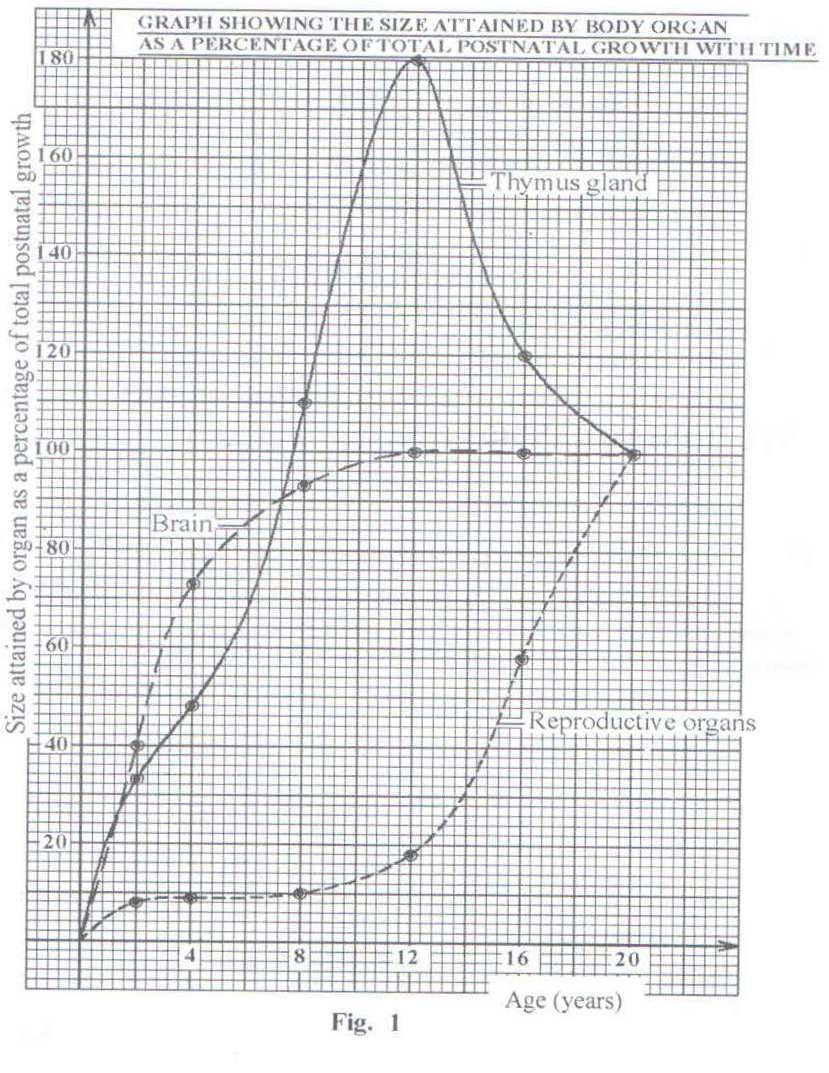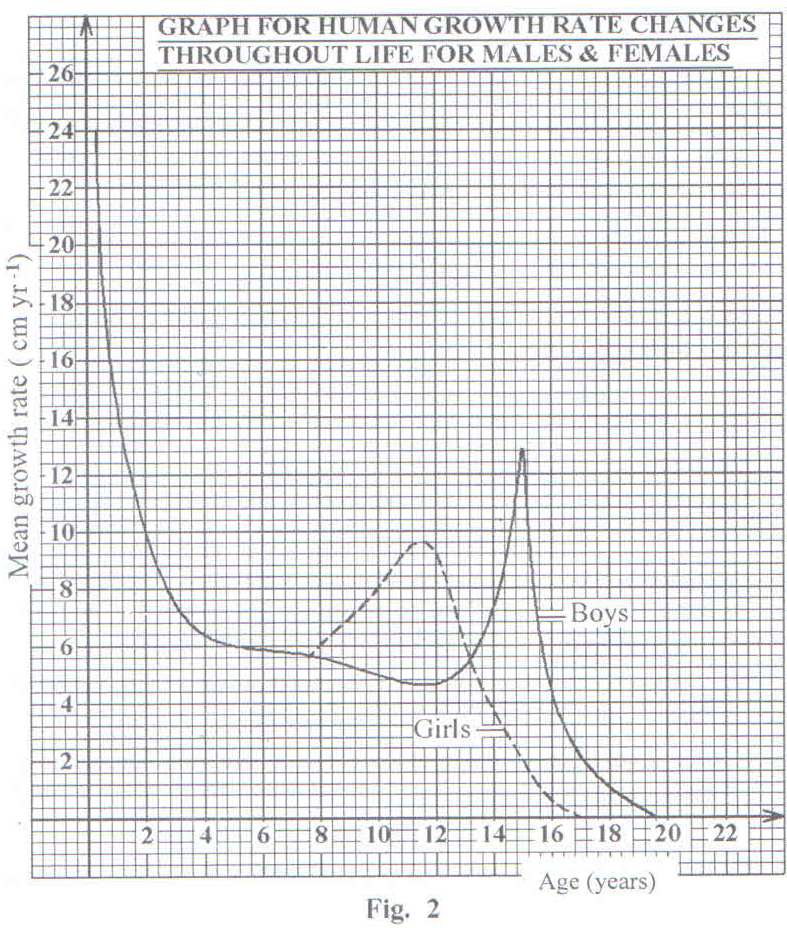1. a) Distinguish between tropic and reflex responses.
b) Explain how tropisms in roots and shoots occur in relation to auxin concentration.
c) Describe the role of hormones in plants.
2. a) How is sex determined in humans?
b) A woman has four sons, one of whom is a haemophiliac and the other three are normal.
i) What are the possible genotypes of the woman and her husband?
ii) Is it possible for the couple to have a haemophiliac daughter? Explain your answer.
3. a) What is meant by
i) green house effect?
ii) eutrophication?
b) Explain how human activities have contributed to the increased greenhouse effect.
c) Suggest practical remedies to the green house problem.
4. Figures 1 and 2 show growth patterns of organs in humans and the mean growth rate in the different sexes respectively. Figure 1 represents the size attained by the human body organs from birth, expressed as a percentage of the total post natal growth. Figure 2 represents the mean growth rate changes in centimeters per year, in boys and girls, from birth to maturity. Study the figures and answer the questions that follow.


a) Describe the growth pattern shown by the
i) thymus
ii) brain
iii) reproductive organs
b) Explain the growth pattern shown by the
i) thymus gland
ii) brain
iii) reproductive organs
c) Compare the mean growth rate in boys and girls
d) Explain the relationship between the size attained by reproductive organs and the mean growth rate between 11- 20 years.
5. a) Differentiate between learned and instinctive behavior.
b) What is the importance of each of the following forms of behavior in animals?
i) Imprinting
ii) Habituation
iii) Associative learning
6. a) Classify enzymes basing on the type of reactions they catalyze.
b) Explain how competitive and non-competitive inhibitions of enzymes occur.
c) What is the importance of enzyme inhibition in enzyme –catalyzed reactions?
END
